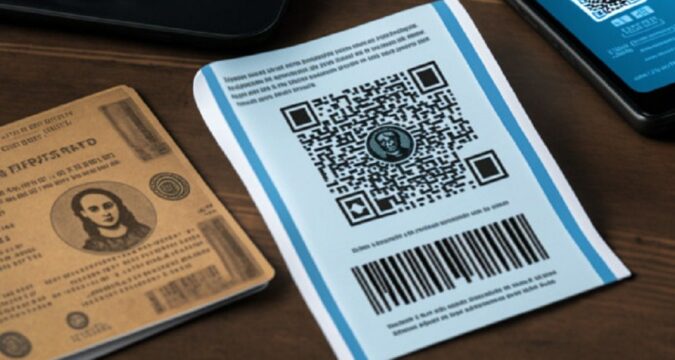
If you’ve been in the crypto space for a reasonable length of time, chances are you’ve heard of a paper wallet. If you’re not that old in the space, you may not have heard, but but that’s okay because we’ll discuss all about it
If you’re going to invest in cryptocurrencies, you’ll need a wallet where you can secure your assets using private keys, no matter how little such an investment is. There are many types of wallets, but they’re broadly divided into cold and hot wallets.
Paper wallets fall into the second category, and though they are not very popular or famous, that doesn’t mean they are not an effective way of protecting your digital assets. Read on and find out more about this simple but excellent wallet type.
What is a Paper Wallet?
As stated earlier, a paper wallet is a kind of cold wallet. As the name implies, it is a cold wallet that is on a piece of paper, rather than a hardware wallet like Ledger. Paper wallets are very simple to use, and also easy to store as they do not take up much space.
They’re also easily ignored by those around you, and confer the same level of security as any other cold wallet. Paper wallets are basically a hard copy print out of your wallet’s private and public keys. You’ll find two alphanumeric strings of characters on it (the private and public key).
The paper print out also has a QR code which you can easily scan to access the wallet on a mobile device. This makes it less technical to use and also very easy, which is why many crypto owners still prefer it to any other way of storing crypto assets.
How to Create a Paper Wallet
Creating a paper wallet is as easy as holding it. You can follow the following simple steps to generate one and start securing your assets.
- Go to BitAddress official website.
- Move your mouse pointer randomly on the page until the reading gets to 100% to generate a random private key
- After that, select “Paper Wallet” from the provided options and print out the displayed result. Click on “Print” to print out your wallet.
- You can share any of the three Bitcoin addresses on the left to receive Bitcoin to the wallet. Do not share any of the private keys with anyone since they can access your wallet with it.
- For added security, you can tick the “BIP38 Encrypt” to create a passphrase.
Congratulations, your paper wallet is all set!
Why Use a Paper Wallet?
Though paper wallets aren’t that popular anymore, there are a couple of reasons you should consider using one to store your Bitcoin.
- It is a cold wallet: Cold wallets are literally offline wallets, which gives them more security than warm wallets. A paper wallet falls into this category which means it is highly secure. No hacker can access your wallet as long as you keep the private keys private.
- Cheap: A typical hardware cold wallet is expensive. The Ledger Nano S which is the cheapest available Ledger wallet costs roughly $60 without shipping. A paper wallet however will only cost you a sheet of paper. The cost difference is wide, but the protection is the same.
- Easy to Create: Creating a paper wallet typically takes seconds. If you order a hardware wallet, it may take days depending on where you live. Plus, literally anyone can create it by using this guide without any crypto knowledge.
- Multi crypto support: You can use a paper wallet to hold Bitcoin and altcoins, just like other cold wallets.
Cons of Using paper Wallets
Paper wallets are easy to set up and all, but they also have their shortcomings, just like any other wallets. Some of these shortcomings are:
- Easily damaged: Destroying a paper wallet can be as easy as washing your clothes with it in the pocket. If you don’t have a backup for the private keys, your portfolio is gone.
- The writing can fade: Holding a paper wallet for long is not advisable as the writing on it can fade, which results in the same problem as the first.


